
Nature can provide us with the most spectacular examples of flora and fauna. Trees often fall into that category. We come across a number of trees every now and then, but we hardly ever give them a second glance. Why should we, right? Trees are boring, after all, and just keep standing in the same spot forever.
The truth, though, is that trees are fascinating organisms. They are largely underappreciated workers of the plant world and have so much beauty in them. Here we present to you some of the most unusual yet fascinating trees from around the globe.
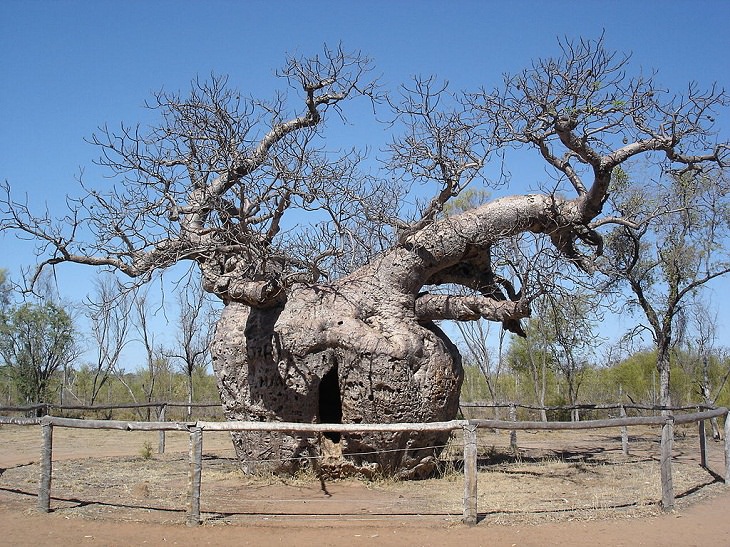
Image source - Wikimedia Commons
While it is named the Boab 'Prison Tree' (Adansonia gregorio), critics and experts argue that the tree was never actually used as a prison, as has been claimed for long. The so-called 1,500-year-old prison tree is just a large hollow boab located south of Derby in Western Australia. It earned its name for being used in the 1890s as a holding cell for Aboriginal prisoners when they would be on their way to Derby for sentencing. That myth, however, has since long been busted because of a lack of any concrete evidence.
Regardless, this is an impressive, though unusual, specimen. It has a girth of almost 50 feet (15 meters) and looks magnificent from the outside. It’s no wonder that the Boab Prison Tree has remained a popular tourist attraction for decades.

Image source - Wikimedia Commons
Jabuticaba, or Myrciaria cauliflora, is an uncommon fruit tree found in Brazil. Its most striking feature is that it produces fruit directly on the trunk (apart from the branches). The small black fruit that the tree produces has a very similar texture to that of a grape and has a sweet and aromatic flavor. In good conditions, the Jabuticaba tree blooms several times a year and produces a hefty number of fruits.

Image source - Wikimedia Commons
You might wonder what’s so special about this tree judging by the picture above. Well, Pennantia baylisiana is known as the world’s rarest tree and comes from the Pennantiaceae family (Icacinaceae in older classifications). It is a critically endangered tree, and currently, only one specimen of it exists in the Three Kings Islands off the north coast of New Zealand where it has been sitting since 1945. Apparently, there were a number of these trees on the island once upon a time, but habitat loss drastically reduced their numbers.
Since the only specimen left is functionally a female, the hope of reproducing these trees is limited.
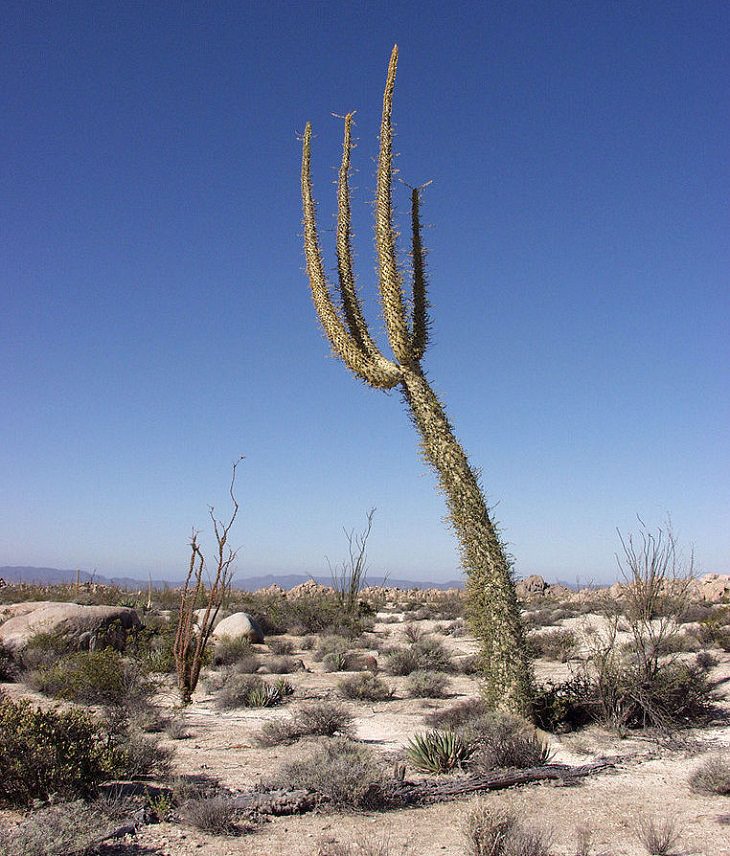
Image source - Wikimedia Commons
From a distance, it looks like an overgrown cactus plant. However, the Boojum Tree (Fouquieria columnaris) is found in the deserts of Baja California and Sonora, Mexico, and can grow up to 50 feet (15 meters) tall. It has a water-storing trunk and is covered with spiny twigs having yellowish flowers in suspended clusters. Since it is a native of the desert, the Boojum Tree’s leaves are small and help it reduce water loss. This tree is sometimes planted in southern California and Arizona for landscape curiosity.
The tree got its uncommon name from a poem named ‘The Hunting of the Snark’ by Lewis Carroll.
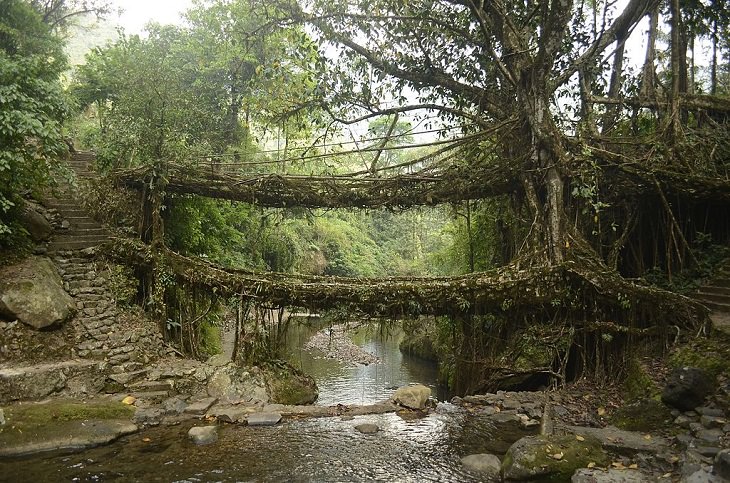
Image source - Wikimedia Commons
While we often marvel at some truly amazing man-made bridges from all over the world, there are some naturally growing bridges, too, that will astound you. On the slopes of the southern Khasi and Jaintia hills in Meghalaya, India, you will find a remarkably strong root system of the Indian rubber tree that functions as a natural bridge. These rubber trees have been used for centuries by the Khasis tribes of the area, who have mastered the art of growing root bridges across streams and rivers.
Also known as Ficus elastic, these trees produce a series of secondary roots from higher up their trunk and can comfortably rest on top of huge boulders and along the riverbanks. The roots keep growing until they find solid earth to attach to. After the roots have formed a bridge, soil, stones, and other wood are used to add a protective layer. These root bridges are hence true marvels of nature.
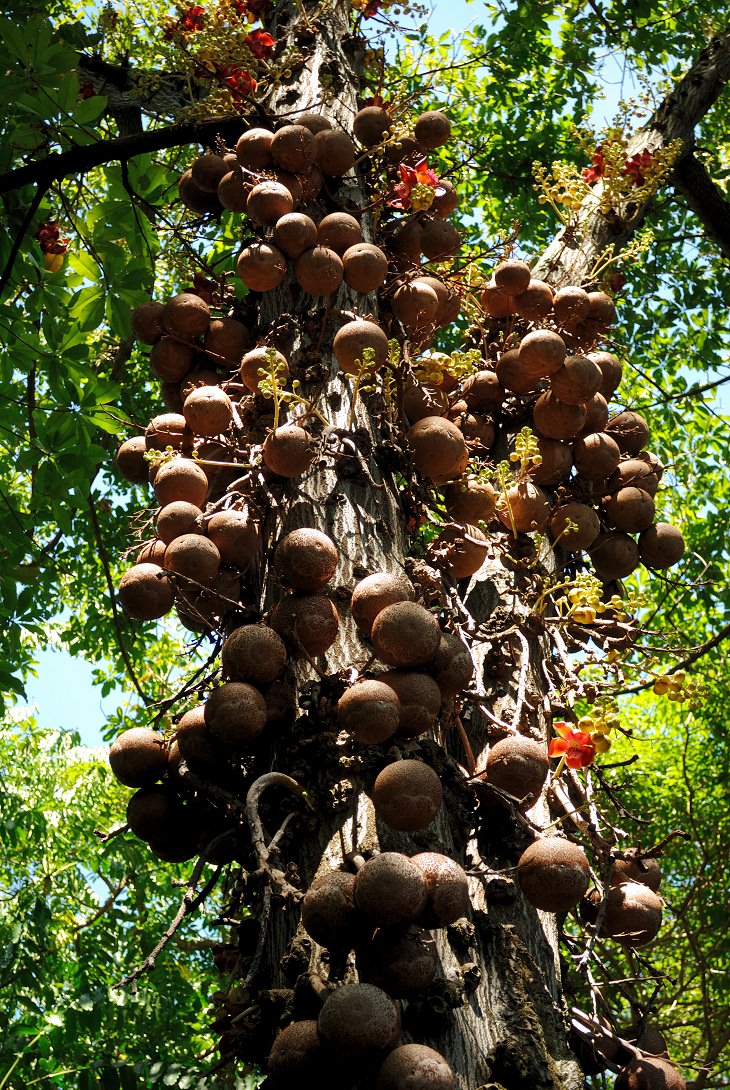
Image source - Wikimedia Commons
The Cannonball tree, (Couroupita guianensis), is thus named because of the large, spherical woody fruit it produces that resembles a cannonball. Native to northeastern South America, this tall and soft-wooded trees look even more peculiar because they bear their fruits straight from the trunk. Even the tree’s flowers are large, beautiful and pleasantly aromatic.
This quirky tree can also be found in various botanical gardens around the world and is a member of the Brazil-nut tree family. Interestingly, it got its scientific name from the French explorer and botanist J.F. Aublet discovered it in 1775.
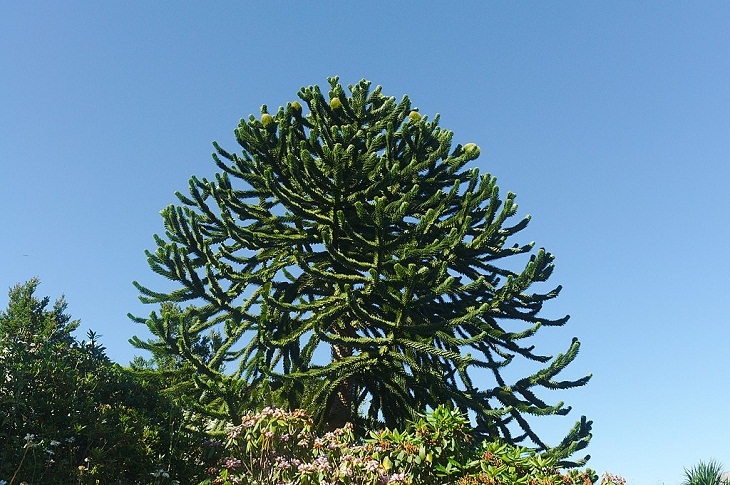
Image source - Wikimedia Commons
Unusual, attractive, and very captivating, the monkey puzzle tree (Araucaria araucana) is an evergreen tree native to central and southern Chile and western Argentina. It has a very distinctive appearance – strange leaves, thick trunks, and branches that arise from the trunk in whorls. The tree got its name with the idea that a monkey would be unable to climb it because of the odd shape of its branches.
The tree is known to grow and live for hundreds of years and can reach 150 feet (46 meters) in height. The thick and stiff leaves of the tree with a pointed tip almost look "reptilian" and add to its charm. The base of the trunk often resembles an elephant's foot from a distance.